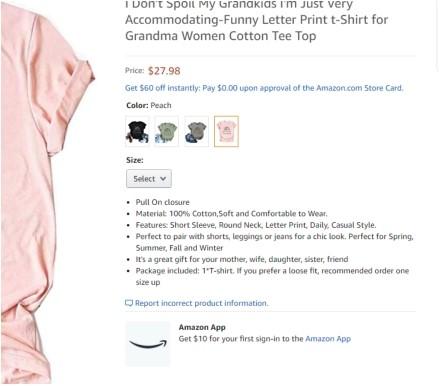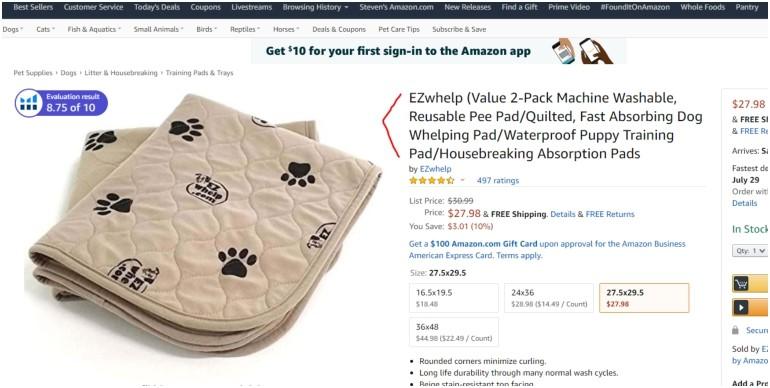Topics:
Never Miss a Beat - Get Updates Direct to Your Inbox
FILTER:


Best Phase 1 SEO Practices and Implementation for Your Amazon Business
By Quiet Light
The Phases of Keyword Optimization
If you are considering launching a new listing as an Amazon FBA seller, there are typically three phases of keyword optimization you will want to be mindful of. The objective with these is to optimize listing copy and backend keywords using Amazon best SEO practices. The three phases are:
- Product launch SEO: Reverse engineering competitor listings and adopting the best practices. To be completed within 72 hours of onboarding a client.
- Copy Update SEO: Do at month 3 for mature listings.
- Advanced Strike Distance SEO: do at month 6 for mature listings that index for 800+ Organic keywords Distribution


Launch SEO Goals:
When you are launching a new listing or ASIN, you should be sure to do the following:
- To create the product listing
- Do competitor research
- Build Content – Product Title
- Build Content – Product Bullets / Key Features + Prod Description
- Build Search Terms
- Complete Other Search Attributes
Step by Step Guide on Product and Competitor Research:
Step 1:
- Check the client’s website and the product you are listing or optimizing.
- Read what the product is about.
- Do not spend too much time here.
- Identify how much information you can use
- Familiarize yourself with the tone of their content (formal or informal)
Step 2:
- Find 1 to 3 competitors and check how their listing looks like on Amazon.
- Examine how they built their titles
- See how they delivered their bullets
- Plan in your head what your listing needs to look like according to the client’s preference
Step 3:
- Always put yourself in the customer’s shoes
- Ask yourself, “What do I want to see as a customer”
- What are the important details I need to emphasize?
- How can I catch the buyer’s attention?


Using Bullet Points Effectively
Having effective, accurate, and informative bullet points are crucial conversion tools for Amazon listings. In addition to being accurate and descriptive, any writing we do for Amazon listings MUST be formatted correctly, have impeccable grammar, and be written with a pleasant, professional tone. This SOP will help give direction on how to do this correctly, and what common errors to be looking out for.
Buy a Profitable Online Business
Outsmart the startup game and check out our listings. You can request a summary on any business without any further obligation.
Bullet Point Examples and How-Tos:
- Start each bullet point with an emoji or point, followed by an all-caps phrase and a colon (:) or hyphen
- Ex: – QUALITY MANUFACTURING –
- After this, the bullet point should follow normal capitalizations
- Ex: – QUALITY MANUFACTURING – Made from 100% cotton manufactured in the USA
- A common mistake is capitalizing the first letter of every word (ex: “Made From 100% Cotton Manufactured In The USA)
- Avoid using end punctuation (period, exclamation point, question mark)
- Instead, use a semicolon (;) to separate phrases in a single bullet point Ex: Made in the USA; made with 100% cotton
- Write bullet points in sentence fragments
- Ex: “Double-stitched seams to maximize durability” instead of “This product has double-stitched seams to maximize durability.”
- Use between 10 – 255 characters per bullet point:
Bullet Point Tone:
- The tone should be professional, clear, and informative
- Unclear or non-descriptive points lose trust with the customer Adjectives should be used sparingly, if at all.
- Avoid “keyword stuffing” the bullet points
- Make sure the bullet points include the proper keywords, but don’t just jumble them together (ex: “shirt, t-shirt, cotton, made in America”). Inclusion of keywords must feel natural
- Quality over quantity. Bullet points should be easy to read, engaging, and highlight the most essential features of a product.


Here is an example of some really good bullet points from a listing selling T-Shirts:


Note specifically the following:
- Written in sentence fragments, but the meaning is clear and concise
- Tone is professional and informative
- All caps bullet titles, with normal capitalization rules for the rest of the bullet
- Tone, formatting, and language is consistent throughout the listing
- While there are a few adjectives here, usage is sparse and precise
Practices With Bullet Points You Should Avoid
- Inconsistent formatting, capitalizations, and grammar choices throughout the listing Some bullet points are unclear or obvious (ex: “Pull On closure”)
- Lacks bullet point titles on most points
- Rather than highlighting product features, some bullet points only exist to fill space (ex: “It’s a great gift for your mother, wife, daughter, sister, friend”)
- A great example is shown on the image below!


How to Get Keywords for your Titles & Bullets for Listing Optimization
- Use all the resources you can get to build your copy.
- For the title, you can base this on the Product sheet provided to you in PDF or simply access the client’s website, or using the product listing and copy the titles listed there.
- After getting the title from the website or from your cheat sheet, you can start adding more relevant keywords. You can either mimic the keywords used by a competitor by checking their listings, or conduct a Reverse ASIN Cerebro Search in Helium10 and select the top-performing ASINS to extract relevant and high search volume keywords.
Example of Website Listing is Shown Below:


Here is the optimized version in Amazon:


How to Get keywords for your Back End Search Terms
Goals:
- Goal is to format your backend search terms with relevant keywords, misspellings, and a little bit of Spanish.
- Backend search terms are the most important SEO tool we have.
Guidelines:
- 249 Max Characters
- 226 Min Characters
- Relevant Keywords
- Misspellings
- Spanish
Thinking of Selling Your Business?
Get a free, individually-tailored valuation and business-readiness assessment. Sell when you're ready. Not a minute before.
Guide to Locating Keywords Through Amazon
- Searching for Competitor ASINs – Make Sure your Helium10 Chrome Extension is Installed
- Search for a relevant Phrase on Amazon
- Search the products, find two or three products that are similar to your target listing that have the following characteristics:
- A high amount of reviews
- Significant sales volume
- Well-optimized listing: pictures, bullets, images, etc.
- Find one top product.
- Once you locate your top ASIN, paste it into Cerebro.
- Process the keywords
- Sort via Organic Rank (Generally 1-50) or the top 50 organic keywords.
- Click Apply
- Then Sort via Search Volume (High to Low)
- Click Apply
- Then Export your keywords to “Frankenstein” (as shown below)
- Through the Frankenstein tool be sure to do the following:
- Output settings:
- Remove Duplicates – Check
- Remove Common Words – Check
- Remove Single Letters – Check
- Remove Special Characters – Check
- Output settings:
- Click Process
- The result will have a wide variety of keywords. You will need to delete keywords until you are 249 characters or lower. Remove keywords that are not relevant, etc. (Note: Keywords at the top will be more relevant than keywords at the bottom).
- Once you narrow your search down you will have your final result.


Next Steps:
- Implement keywords into:
- Back End Search Terms
- Bullet Points
- Titles
- Other Attribute Keywords
- Descriptions
- A+ Content
- More
Next Steps: Let Phase 1 matriculate for at least 30 days. Once your listings begin to rank on Amazon, we move to stage 2. Stage 2 helps increase indexing further by removing any keywords which may be existent in your copy already and to replace these “duplicate keywords” with misspellings, Spanish, or long-tail keywords to ensure optimal SEO efficiency.
As you see growth and you have at least 12 months of P&L’s, reach out to Quiet Light to get a personally-tailored baseline valuation for your Amazon FBA business. Understanding your underlying value can help identify which levers to pull to increase your growth.
About My Amazon Guy: An 150+ client full-service Amazon Agency in Atlanta, Georgia. We growth hack sales through traffic and conversion improvements. PPC, SEO, Design, Catalog Merchandising, and more all in house.
About Steven Pope: Steven is the founder of My Amazon Guy. He started his career as a TV reporter in Idaho, then was an eCommerce Director for 10 years for brands ranging from Gold & Silver Coins to Women’s Plus Size Clothing. After dozens of requests to side hustle consult for Amazon clients he started the agency to make it easier to growth hack the platform. Steven owns MAG, My Refund Guy – a clawback FBA service, and Momstir – a Private Label FBA Wine Glass brand. He has more than 300 tutorial videos on YouTube showing how to handle ANY problem faced on Amazon. Steven also hosts a podcast with interviews from other Amazon experts.





